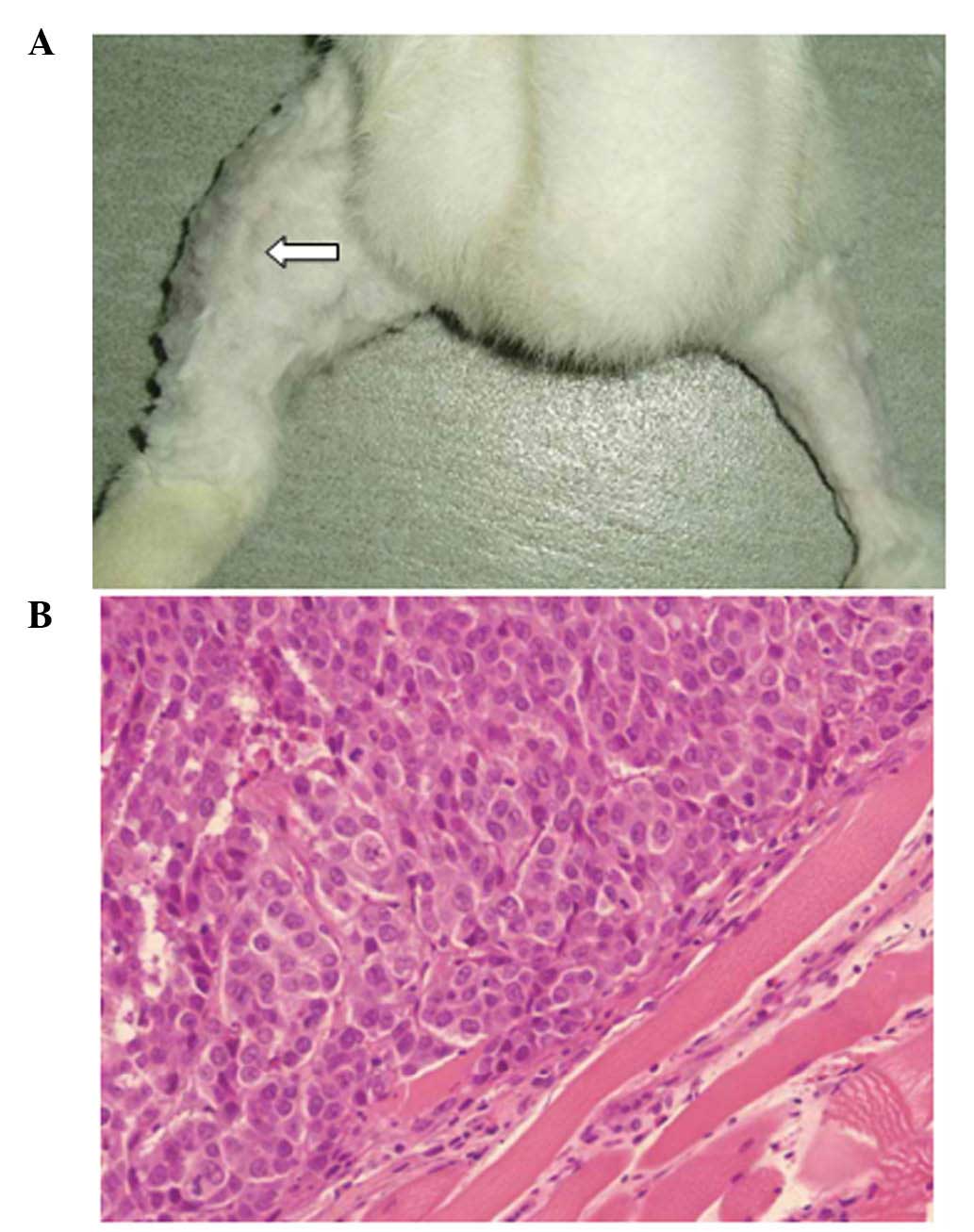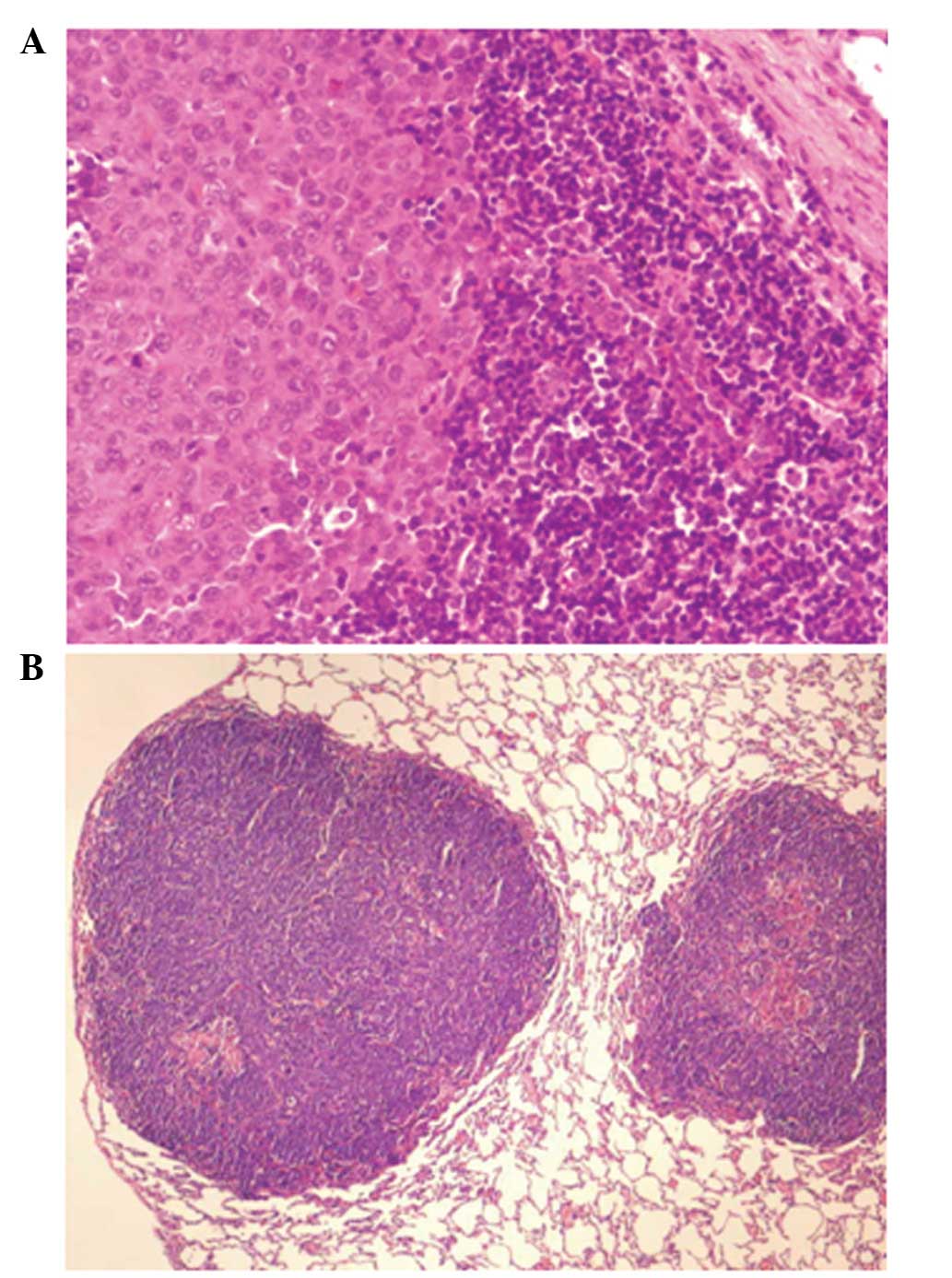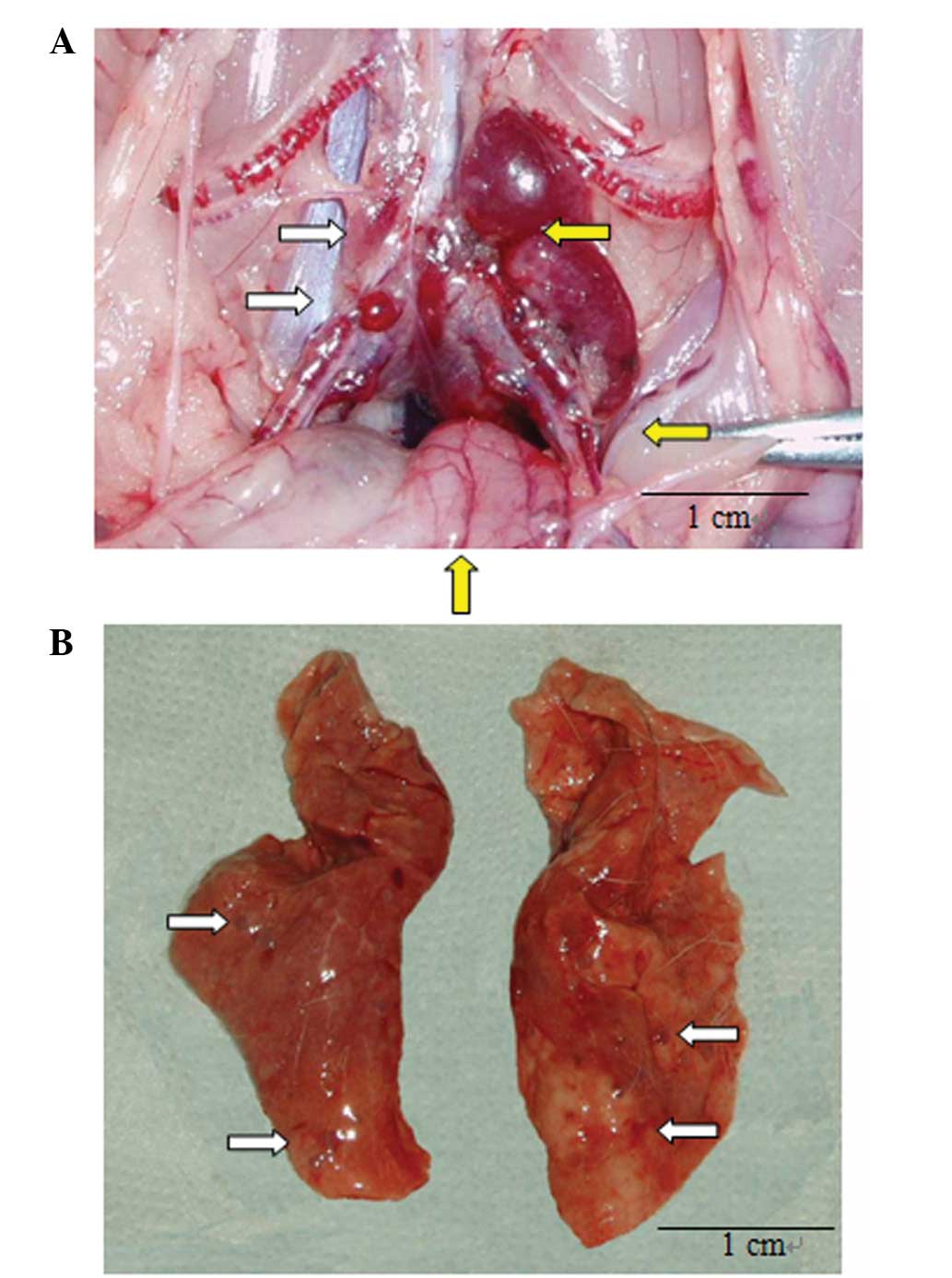|
1
|
Pecorelli S, Benedet JL, Creasman WT and
Shepherd JH: FIGO staging of gynecologic cancer. 1994–1997 FIGO
Committee on Gynecologic Oncology. International Federation of
Gynecology and Obstetrics. Int J Gynaecol Obstet. 64:5–10.
1999.
|
|
2
|
Kanazawa K, Suzuki T and Tokashiki M: The
validity and significance of substage IIIC by node involvement in
epithelial ovarian cancer: impact of nodal metastasis on patient
survival. Gynecol Oncol. 73:2371999. View Article : Google Scholar : PubMed/NCBI
|
|
3
|
Szekeres T, Saiko P, Fritzer-Szekeres M,
Djavan B and Jäger W: Chemopreventive effects of resveratrol and
resveratrol derivatives. Ann NY Acad Sci. 1215:89–95. 2011.
View Article : Google Scholar : PubMed/NCBI
|
|
4
|
Trencsenyi G, Kertai P, Bako F, et al:
Renal capsule-parathymic lymph node complex: a new in vivo
metastatic model in rats. Anticancer Res. 29:2121–2126.
2009.PubMed/NCBI
|
|
5
|
Servais EL, Colovos C, Bograd AJ, White J,
Sadelain M and Adusumilli PS: Animal models and molecular imaging
tools to investigate lymph node metastases. J Mol Med (Berl).
89:753–769. 2011. View Article : Google Scholar : PubMed/NCBI
|
|
6
|
Fu X and Hoffman RM: Human ovarian
carcinoma metastatic models constructed in nude mice by orthotopic
transplantation of histologically-intact patient specimens.
Anticancer Res. 13:283–286. 1993.
|
|
7
|
Chang S, Gu M, Wu F, et al: Establishment
of transplanted endometrial neoplasm model in rabbit and its
biological features. Prog Obstet Gynecol. 9:163–165. 2000.
|
|
8
|
Harima Y, Harima K, Hasegawa T, Shikata N
and Tanaka Y: Histopathological changes in rabbit uterus carcinoma
after transcatheter arterial embolization using cisplatin. Cancer
Chemother Pharmacol. 38:317–322. 1996. View Article : Google Scholar
|
|
9
|
Harima Y, Harima K, Hasegawa T, Shikata N
and Tanaka Y: Transcatheter arterial embolization with cisplatin:
apoptosis in VX2 tumour uterus transplants. Anticancer Res.
16:193–199. 1996.PubMed/NCBI
|
|
10
|
Ishibashi S, Sonoda K, Fujii K, Ishikawa
K, Shiraishi N and Kitano S: A convenient murine model for the
study of intra-abdominal lymph node metastasis. Oncol Rep.
12:115–118. 2004.PubMed/NCBI
|
|
11
|
Choi SH, Kim KH, Moon WK, Kim HC, Cha JH,
Paik JH and Chang KH: Comparison of lymph node metastases
assessment with the use of USPIO-enhanced MR imaging at 1.5 T
versus 3.0 T in a rabbit model. J Magn Reson Imaging. 31:134–141.
2010. View Article : Google Scholar : PubMed/NCBI
|
|
12
|
Choi SH, Moon WK, Hong JH, et al: Lymph
node metastasis: ultrasmall superparamagnetic iron oxide-enhanced
MR imaging versus PET/CT in a rabbit model. Radiology. 242:137–143.
2007. View Article : Google Scholar : PubMed/NCBI
|
|
13
|
Herborn CU, Lauenstein TC, Vogt FM,
Lauffer RB, Debatin JF and Ruehm SG: Interstitial MR lymphography
with MS-325: characterization of normal and tumor-invaded lymph
nodes in a rabbit model. AJR Am J Roentgenol. 179:1567–1572. 2002.
View Article : Google Scholar : PubMed/NCBI
|
|
14
|
Wang L, Yao Q, Wang J, et al: MRI and
hybrid PET/CT for monitoring tumour metastasis in a metastatic
breast cancer model in rabbit. Nucl Med Commun. 29:137–143. 2008.
View Article : Google Scholar : PubMed/NCBI
|
|
15
|
Tsuda N, Tsuji T and Kato N: Interstitial
magnetic resonance lymphography using
gadolinium-ethoxybenzyl-diethylenetriamine pentaacetic acid in
rabbits with lymph node metastasis. Invest Radiol. 40:306–312.
2005. View Article : Google Scholar
|
|
16
|
Rhee TK, Ryu RK, Bangash AK, et al: Rabbit
VX2 tumors as an animal model of uterine fibroids and for uterine
artery embolization. J Vasc Interv Radiol. 18:411–418. 2007.
View Article : Google Scholar : PubMed/NCBI
|
|
17
|
Shen N, Wu H, Xu X, Wang J, Hoffman MR,
Rieves AL and Zhou L: Cervical lymph node metastasis model of
pyriform sinus carcinoma. ORL J Otorhinolaryngol Relat Spec.
71:129–134. 2009. View Article : Google Scholar : PubMed/NCBI
|
|
18
|
Kidd JG and Rous P: A transplantable
rabbit carcinoma originating in a virus induced papilloma and
containing the virus in masked or altered form. J Exp Med.
71:813–838. 1940. View Article : Google Scholar : PubMed/NCBI
|
|
19
|
Horkan C, Ahmed M, Liu Z, Gazelle GS,
Solazzo SA, Kruskal JB and Goldberg SN: Radiofrequency ablation:
effect of pharmacologic modulation of hepatic and renal blood flow
on coagulation diameter in a VX2 tumor model. J Vasc Interv Radiol.
15:269–274. 2004. View Article : Google Scholar : PubMed/NCBI
|
|
20
|
Chen JH, Li Y, Yao Q, Ling R, Wang L, Li
KZ, Wang Z and Chen T: Treatment of rabbits bearing advanced VX2
tumors in the mammary gland with nano-sized liposomal adriamyc in
administered by various routes. Natl Med J China. 85:3039–3042.
2005.PubMed/NCBI
|
|
21
|
Maggioni A, Benedetti Panici P, Dell'Anna
T, et al: Randomised study of systematic lymphadenectomy in
patients with epithelial ovarian cancer macroscopically confined to
the pelvis. Br J Cancer. 95:699–704. 2006. View Article : Google Scholar : PubMed/NCBI
|
|
22
|
Angioli R, Plotti F, Palaia I, et al:
Update on lymphadenectomy in early and advanced ovarian cancer.
Curr Opin Obstet Gynecol. 20:34–39. 2008. View Article : Google Scholar : PubMed/NCBI
|
|
23
|
Bolger BS, Dabbas M, Lopes A and Monaghan
JM: Prognostic value of preoperative squamous cell carcinoma
antigen level in patients surgically treated for cervical
carcinoma. Gynecol Oncol. 65:309–313. 1997. View Article : Google Scholar : PubMed/NCBI
|
|
24
|
Shigematsu N, Ito H, Nishiguchi I, et al:
Prognostic factors of cervical carcinoma treated with postoperative
radiotherapy. Nippon Igaku Hoshasen Gakkai Zasshi. 57:28–33.
1997.(In Japanese).
|
|
25
|
Peiretti M, Zapardiel I, Zanagnolo V,
Landoni F, Morrow CP and Maggioni A: Management of recurrent
cervical cancer: a review of the literature. Surg Oncol.
21:e59–e66. 2012. View Article : Google Scholar : PubMed/NCBI
|
|
26
|
Morice P, Joulie F, Rey A, et al: Are
nodal metastases in ovarian cancer chemoresistant lesions? Analysis
of nodal involvement in 105 patients treated with preoperative
chemotherapy. Eur J Gynaecol Oncol. 25:169–174. 2004.
|












